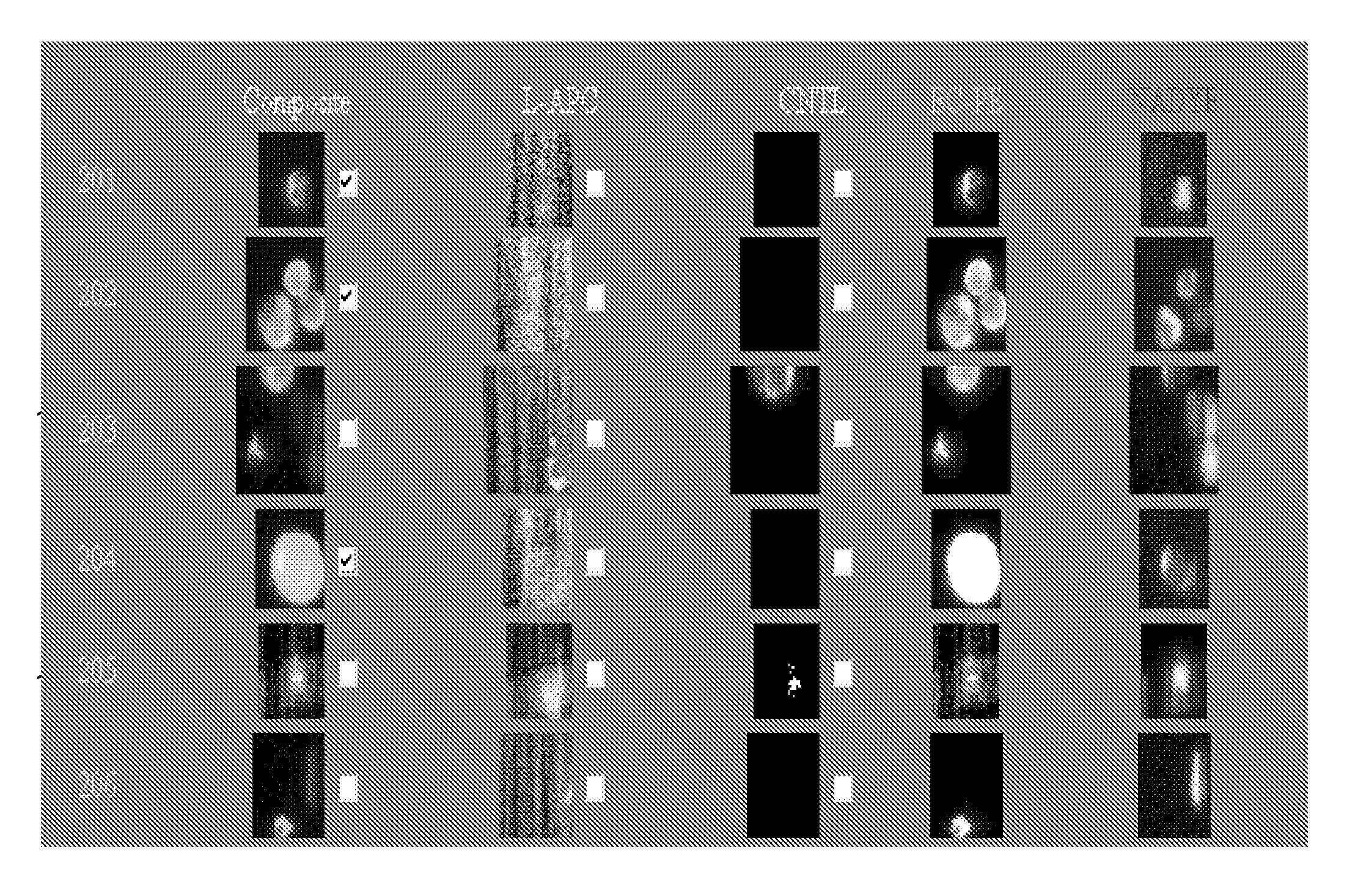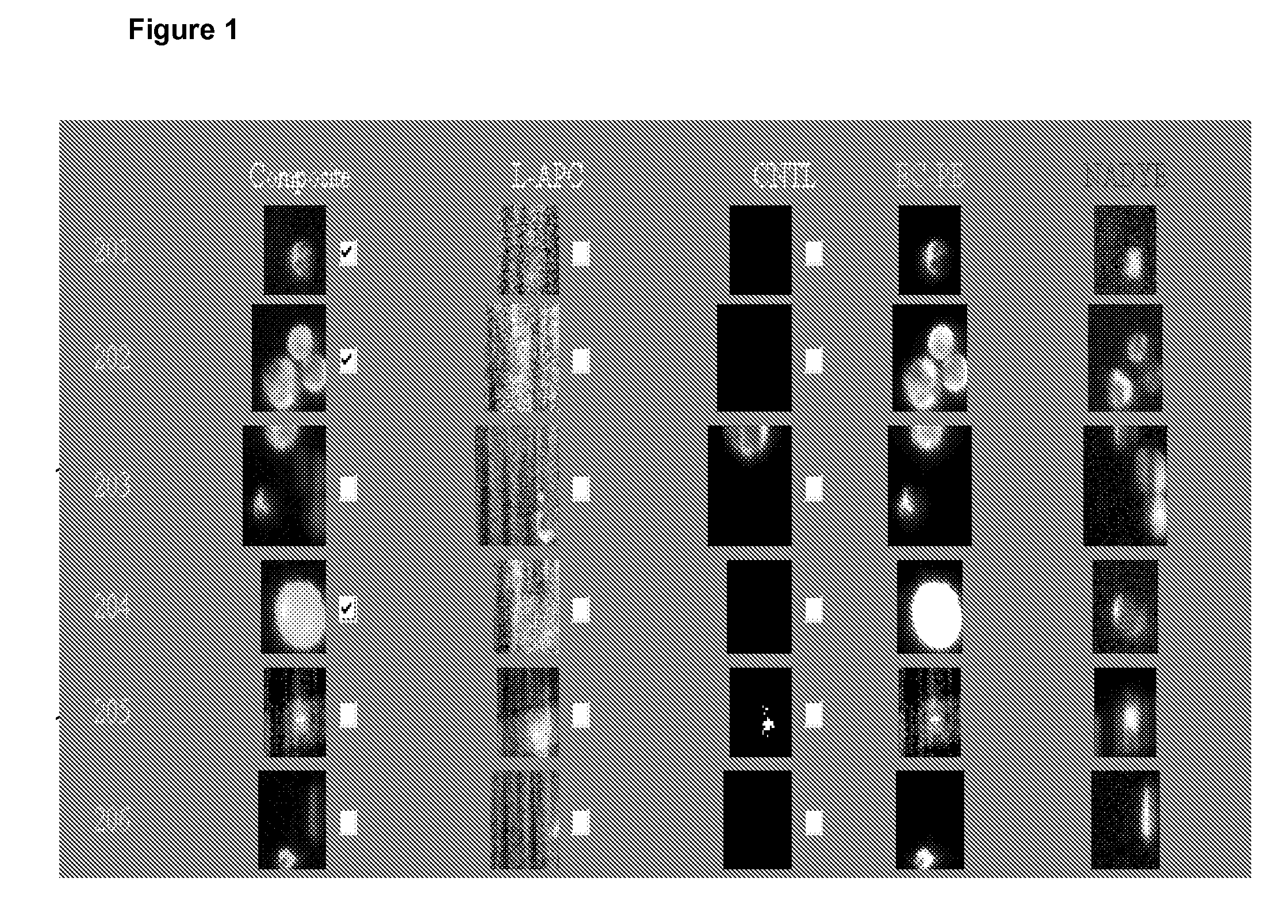Pre-clinical method for monitoring serial changes in circulating breast cancer cells in mice
a breast cancer cell and mice technology, applied in the field of cancer monitoring and assessing disease progression in metastatic cancer patients, can solve the problems of limited research on the role of ctc in metastasis and the expansion of their use as a biomarker in pharmacokinetic and pharmacodynamic studies, and is difficult to detect and elimina
- Summary
- Abstract
- Description
- Claims
- Application Information
AI Technical Summary
Problems solved by technology
Method used
Image
Examples
example 1
Enumeration of Circulating Cytokeratin Positive Cells
[0032]The CellTracks® System refers to an automated fluorescence microscopic system for automated enumeration of isolated cells from blood. The system contains an integrated computer controlled fluorescence microscope and automated stage with a magnetic yoke assembly that will hold a disposable sample cartridge. The magnetic yoke is designed to enable ferrofluid-labeled candidate tumor cells within the sample chamber to be magnetically localized to the upper viewing surface of the sample cartridge for microscopic viewing. Software presents suspect cancer cells, labeled with antibodies to cytokeratin and having epithelial origin, to the operator for final selection.
[0033]While isolation of tumor cells for the CellTracks® System can be accomplished by any means known in the art, one embodiment uses immunomagentic enrichment for isolating tumor cells from a biological sample. Epithelial cell-specific magnetic particles are added and ...
example 2
In Vitro Recovery of Human Epithelial Cells
[0035]To accomplish this, 500 MDA-MB-231 breast cancer cells were spiked into 100 μl blood samples collected from mice without tumors. Since the clinical version of the assay requires blood be drawn into a proprietary vacuum tube, such as the CellSave tube, containing both an anticoagulant and a preservative, a proportionately reduced amount of CellSave solution was added to the specimens. The spiked specimens were then prepared, the CTC quantified and the percent recovery calculated. As a positive control, additional samples using MDA-MB-231 cells stably transduced with GFP were prepared. Fluorescence from GFP was detected in an open channel (FITC) of the system to confirm that all cells quantified as epithelial cells corresponded with 231-GFP cells added to mouse blood. As a negative control, mouse blood samples without cancer cells were collected, processed in an identical manner and analyzed. Of the 500 cells added to mouse blood (n=4 s...
example 3
Recovery of CTC from Xenografts in Mice
[0036]The preferred method to serially monitor CTC's in mouse models of human breast cancer incorporates the use of the CellTracks® System. As previously discussed, the system uses immunomagnetic isolation of epithelial cells from blood and immunofluorescent staining to further differentiate epithelial cancer cells from leukocytes. Because the CellTracks® system was originally developed to process 7.5 to 30 ml human blood samples, it is necessary that human epithelial breast cancer cells could be reliably recovered from small volumes of mouse blood using this assay (see Example 2).
[0037]The system was used to identify CTC's that spontaneously intravasate into the circulation from orthotopic tumor xenografts of MDA-MB-231 cells. 0.7 to 1 ml blood samples were collected from each mouse by puncture of the left ventricle when animals were euthanized for tumor burden at 10 weeks. Total numbers of CTC's ranged from approximately 100 to 1000 cells per...
PUM
 Login to View More
Login to View More Abstract
Description
Claims
Application Information
 Login to View More
Login to View More - R&D
- Intellectual Property
- Life Sciences
- Materials
- Tech Scout
- Unparalleled Data Quality
- Higher Quality Content
- 60% Fewer Hallucinations
Browse by: Latest US Patents, China's latest patents, Technical Efficacy Thesaurus, Application Domain, Technology Topic, Popular Technical Reports.
© 2025 PatSnap. All rights reserved.Legal|Privacy policy|Modern Slavery Act Transparency Statement|Sitemap|About US| Contact US: help@patsnap.com



